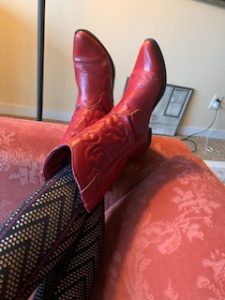
Tag Lines: These are the words that follow who is speaking (said, replied, answered). They can often be replaced with tags that add information by indicating how the dialogue is spoken (snarled, quipped, growled) and, by extension, capture the attitude or activity of the character.
“That was close,” Jack said. “We have less than an hour before our flight to Austin.”
An alternative is to use action tags. These describe what a character does when saying the words. For example: laughed, smiled, grinned, chuckled, or sighed. They do not describe how words are spoken. Think of actions tags this way: you can growl [how], but you can’t chuckle a word [action]. For variety, the speaker and the action tag can precede the dialogue:
Jack laughed. “Are you talking about Rosa Linda, your only daughter, the one whose middle name is Trouble?”
Semicolons: I love using semicolons and probably overuse them; once I see them on paper, they look so nice I tend to leave them there. But I didn’t know that they’re not stylistic in novels. One editor stated in reference to one of my manuscripts: “Please do not use semicolons when writing fiction.” She added that most editors hate them, and when writing fiction, it is better to use a period, comma, or em-dash (I love those, too). Luckily, the editor made the edits for me, and all I had to do was approve them; otherwise, I’d still be editing into next week. In the entire 290-page manuscript, only one semicolon survived.
Now, I’ve just finished another manuscript and have been on a semicolon hunt. After an hour of replacing them with periods and em-dashes, I’ve only covered the first thirty pages. By the time I finish, I hope my manuscript doesn’t look like a Morse Code message.
Considering what to give the writer in your life for Christmas? Contact me for a gift certificate for a free hour’s consultation.


